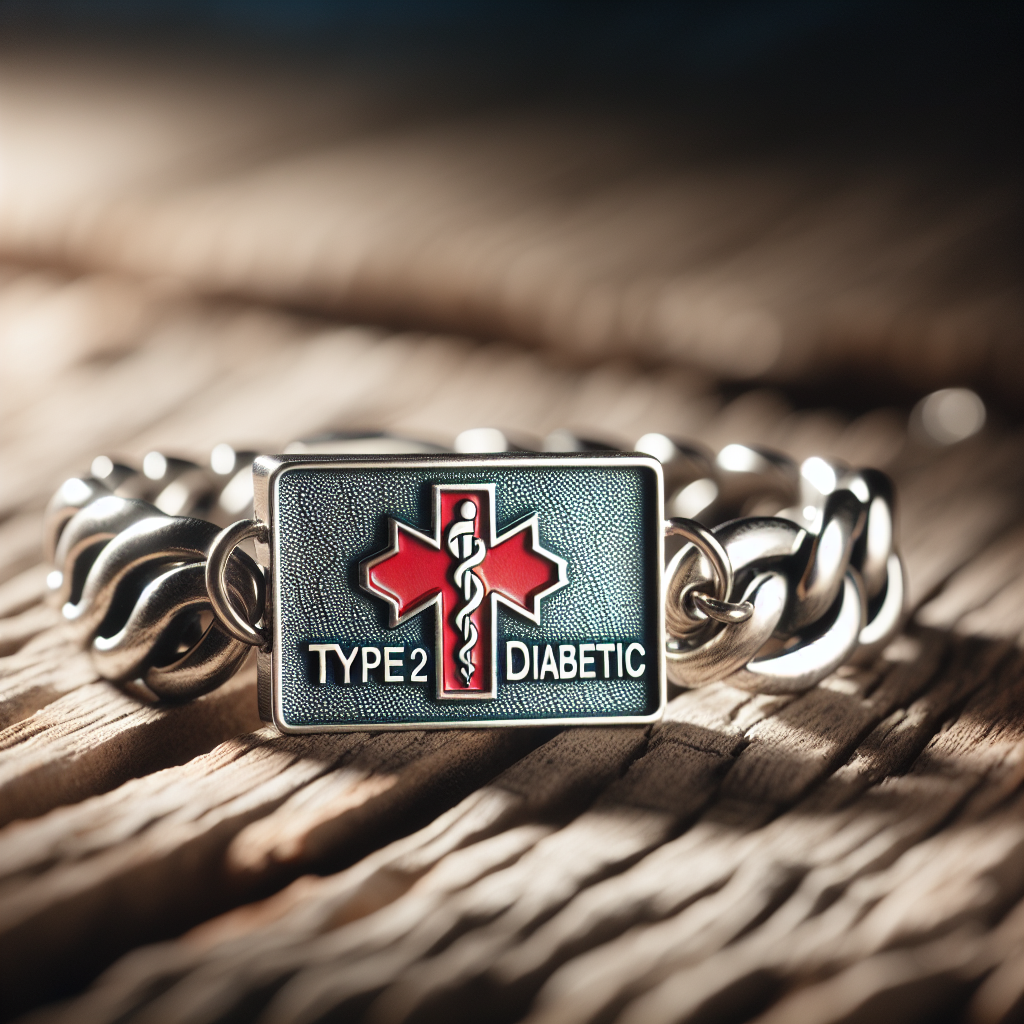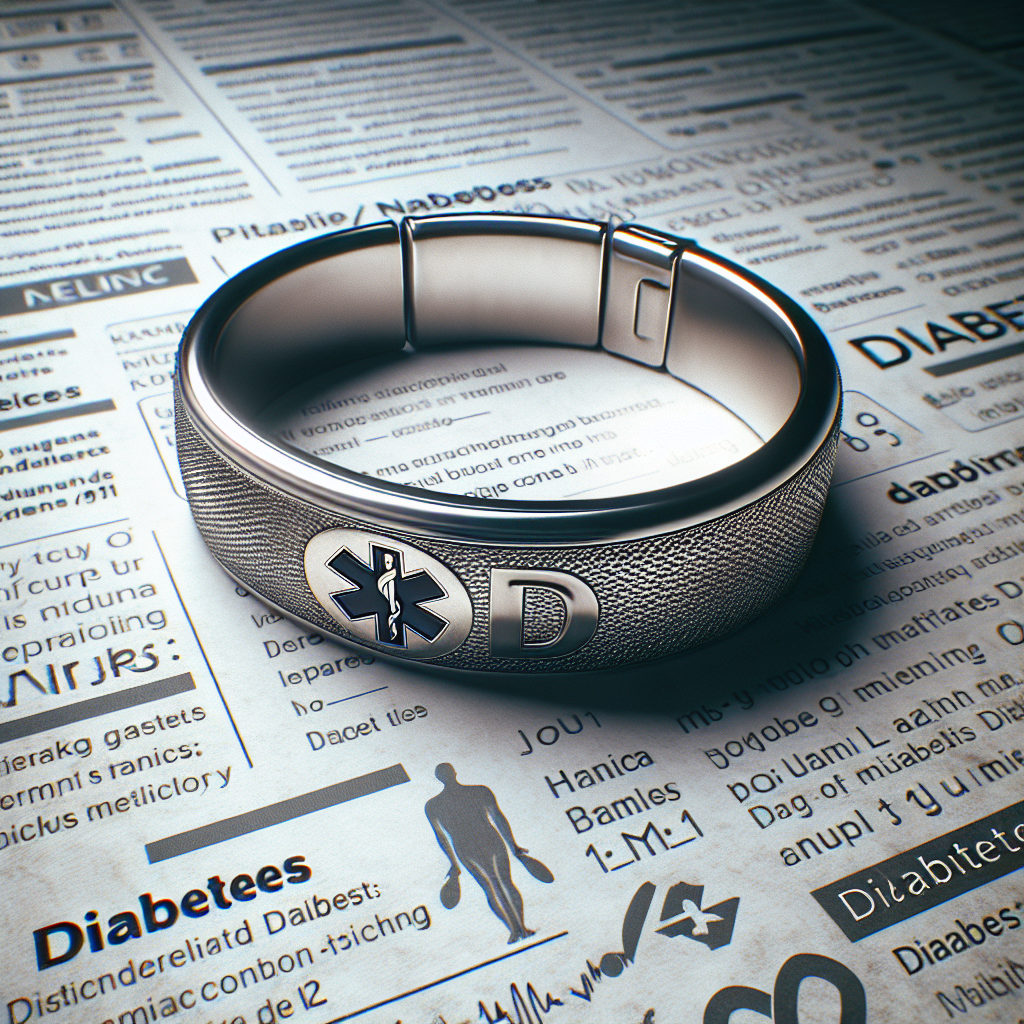Imagine this scenario: you’re out running errands and suddenly feel dizzy and weak. You brush it off as just another symptom of your busy day. Little do you know, however, that your blood sugar levels have dropped dangerously low. In such a situation, a medical alert bracelet could be a lifesaver. But do Type 2 diabetics really need one? This article explores the importance of medical alert bracelets for individuals living with Type 2 diabetes and the potential benefits they can bring to their well-being.

Benefits of Medical Alert Bracelets for Type 2 Diabetics
When it comes to managing Type 2 diabetes, immediate medical attention can be crucial in preventing serious complications. Medical alert bracelets provide an effective way to ensure that you receive the proper care in a timely manner. By wearing a medical alert bracelet, you can have peace of mind knowing that help will be summoned promptly if needed.
One of the most significant benefits of medical alert bracelets for Type 2 diabetics is their ability to provide vital medical information to healthcare professionals during emergencies. In the event that you are unable to communicate your condition, these bracelets can speak for you. They often display a diabetes emblem or symbol that instantly alerts medical personnel to your condition.
Misdiagnosis can be a common problem for Type 2 diabetics, as the symptoms can sometimes mimic other medical conditions. However, with a medical alert bracelet, healthcare providers are more likely to consider diabetes as a possible cause. This can lead to quicker diagnosis and appropriate treatment, ultimately reducing the risk of misdiagnosis.
Medical errors can occur in emergency situations, especially if a patient is unable to communicate important medical information. By wearing a medical alert bracelet, you can help healthcare professionals avoid such errors. The bracelet can provide critical information about your medical conditions, medications, allergies, and any special instructions that need to be followed.
Signs and Symptoms of Type 2 Diabetes
Recognizing the signs and symptoms of Type 2 diabetes is essential for early detection and proper management of the condition. Some of the common signs and symptoms include:
- Increased thirst: Constantly feeling thirsty and needing to drink more fluids than usual.
- Frequent urination: Having to urinate more frequently than usual, especially during the night.
- Fatigue: Feeling tired and lacking energy even after getting enough rest.
- Blurred vision: Experiencing blurry or distorted vision, which can affect your daily activities.
- Slow healing wounds: Cuts, sores, or bruises that take longer than usual to heal.
Being aware of these signs and symptoms can help you seek medical attention and get properly diagnosed if you suspect that you may have Type 2 diabetes.
Potential Dangers for Type 2 Diabetics
Type 2 diabetes can pose several potential dangers to your health if not properly managed. It is important to understand and recognize these dangers to prevent complications. Some of the potential dangers include:
- Hypoglycemia: This occurs when blood sugar levels drop too low, leading to symptoms such as dizziness, confusion, sweating, and even loss of consciousness.
- Hyperglycemia: The opposite of hypoglycemia, hyperglycemia happens when blood sugar levels are too high. This can result in symptoms such as excessive thirst, frequent urination, fatigue, and blurry vision.
- Ketoacidosis: This is a serious condition that can occur when your body produces high levels of ketones, which are acidic byproducts of fat metabolism. It can cause symptoms such as nausea, vomiting, abdominal pain, and fruity-smelling breath.
- Diabetic coma: Severe cases of hyperglycemia or ketoacidosis can lead to a diabetic coma, which is a medical emergency. It is characterized by unconsciousness and requires immediate medical attention.
Understanding these potential dangers can help motivate you to manage your Type 2 diabetes effectively and seek medical help when needed.
Medical Alert Bracelet Features for Type 2 Diabetics
Medical alert bracelets designed specifically for Type 2 diabetics often include features that provide essential information to emergency responders. These features ensure that you receive the appropriate care in the event of an emergency. Some of the key features of these bracelets include:
- Diabetes emblem or symbol: This instantly alerts healthcare professionals to your condition, ensuring that you receive diabetes-specific care.
- Emergency contact information: This provides a way for emergency responders to quickly contact your loved ones or designated emergency contacts.
- Medical conditions and medications: The bracelet can list important medical conditions, such as Type 2 diabetes, as well as any medications you are currently taking. This information helps healthcare providers make informed decisions about your care during emergencies.
- Allergies and special instructions: If you have any allergies or require special instructions for your care, these can be included on the bracelet. This ensures that healthcare professionals are aware of any specific precautions or medication restrictions.
These features make medical alert bracelets a valuable tool for Type 2 diabetics, providing vital information that can potentially save lives.

Alternate Means of Medical Identification
While medical alert bracelets are a popular and effective choice for medical identification, there are also alternative options available. These alternatives can provide additional or backup methods of conveying your medical information during emergencies. Some of the alternate means of medical identification include:
- Wallet cards: Carry a card in your wallet or purse that contains all your critical medical information. This can serve as a backup in case you are not wearing your medical alert bracelet.
- Smartphone apps: There are numerous smartphone apps available that allow you to store your medical information and emergency contacts digitally. These apps often have a feature that can be accessed from the lock screen, ensuring that the information is readily available to healthcare professionals.
- Digital medical ID: Some healthcare providers and medical alert systems offer digital medical ID services. These services allow you to create and manage your medical profile online, making it accessible to emergency responders who have access to your digital ID.
Considering these alternate means of medical identification can provide additional peace of mind, knowing that your medical information is easily accessible even if you forget to wear your medical alert bracelet.
Considerations When Choosing a Medical Alert Bracelet
Choosing a medical alert bracelet requires careful consideration to ensure that it suits your needs and preferences. Some of the important factors to keep in mind when selecting a medical alert bracelet include:
- Comfort and durability: Since you will be wearing the bracelet constantly, it is essential that it is comfortable and durable. Look for bracelets made of materials that won’t irritate your skin or cause discomfort.
- Style and personalization: You are more likely to wear your medical alert bracelet consistently if you like its style and design. There are various options available, enabling you to find one that matches your taste and personal preferences.
- Ease of information updates: As your medical information may change over time, it is important to choose a bracelet that allows for easy updates. Look for bracelets that offer options for updating or replacing the information tags or charms.
- Compatibility with medic alert systems: If you have a medic alert system at home or use one while traveling, it is crucial to ensure that your medical alert bracelet is compatible with the system. This ensures that your information is readily available to emergency responders.
By considering these factors, you can choose a medical alert bracelet that meets your specific needs and requirements.

Legal and Regulatory Considerations
Privacy and protection of personal health information are important considerations when it comes to medical alert bracelets. Different countries have their own legal and regulatory frameworks that govern the use and protection of medical information. Some key considerations include:
- HIPAA compliance: If you reside in the United States, it is important to ensure that any medical alert bracelet provider complies with the Health Insurance Portability and Accountability Act (HIPAA). HIPAA sets standards for protecting sensitive patient health information.
- Personal data protection: In other countries, personal data protection laws may be in place to safeguard individuals’ private information. Before choosing a medical alert bracelet, familiarize yourself with the data protection laws in your country.
- Medical alert laws by country: Some countries may have specific regulations or guidelines regarding medical alert bracelets. Research and familiarize yourself with the regulations in your country to ensure compliance.
Understanding the legal and regulatory landscape surrounding medical alert bracelets can help you make an informed decision and protect your personal health information.
Addressing Concerns and Stigma
While medical alert bracelets can provide crucial information and potentially save lives, there may be concerns and stigma associated with wearing one. It is important to address and overcome these concerns to fully embrace the benefits they offer. Some common concerns include:
- Privacy and disclosure: Some individuals may worry about their private medical information being disclosed to strangers. However, it is essential to remember that medical alert bracelets are designed to provide necessary information during emergencies, and strict privacy frameworks are in place to protect your information.
- Social perception: Wearing a medical alert bracelet may cause concerns about how others perceive you. However, it is important to prioritize your health and safety over any potential social judgment. Educating others about the purpose and importance of medical alert bracelets can help reduce any negative perceptions or misconceptions.
Explaining the purpose and importance of wearing a medical alert bracelet to your loved ones can help address any concerns they may have and ensure they understand the benefits it provides.

Making an Informed Decision
When it comes to deciding whether or not to wear a medical alert bracelet as a Type 2 diabetic, it is crucial to make an informed decision. Here are some key steps you can take:
- Consult with healthcare professionals: Discuss the benefits and potential risks of wearing a medical alert bracelet with your healthcare team. They can provide valuable insights based on your specific medical history and circumstances.
- Consider personal risk factors: Evaluate your individual risk factors and medical history. Factors such as frequent hypoglycemic episodes, living alone, or having other medical conditions may increase the importance of wearing a medical alert bracelet.
- Weigh costs and benefits: Consider the costs associated with purchasing and maintaining a medical alert bracelet alongside the potential benefits it can provide. Assess whether the peace of mind and potential lifesaving advantages outweigh the financial investment.
By going through these steps, you can make an informed decision that aligns with your personal circumstances and priorities.
Conclusion
Medical alert bracelets offer numerous benefits for Type 2 diabetics, including ensuring immediate medical attention, providing vital medical information, reducing the risk of misdiagnosis, and avoiding medical errors. Recognizing the signs and symptoms of Type 2 diabetes and understanding the potential dangers it poses can help motivate individuals to manage their condition effectively. Medical alert bracelets, with their specific features tailored to Type 2 diabetics, serve as a valuable tool in emergency situations. Considering alternate means of medical identification, such as wallet cards or smartphone apps, can provide additional options for conveying medical information. When choosing a medical alert bracelet, factors like comfort, style, and ease of information updates should be considered. Legal and regulatory considerations, including HIPAA compliance and personal data protection, should be taken into account. Addressing concerns and stigma associated with wearing a medical alert bracelet is important to fully embrace its benefits. Making an informed decision by consulting healthcare professionals, considering personal risk factors, and weighing costs and benefits can help ensure the best choice for each individual. In conclusion, medical alert bracelets are a valuable resource for Type 2 diabetics, providing peace of mind and potentially life-saving assistance in emergency situations.


